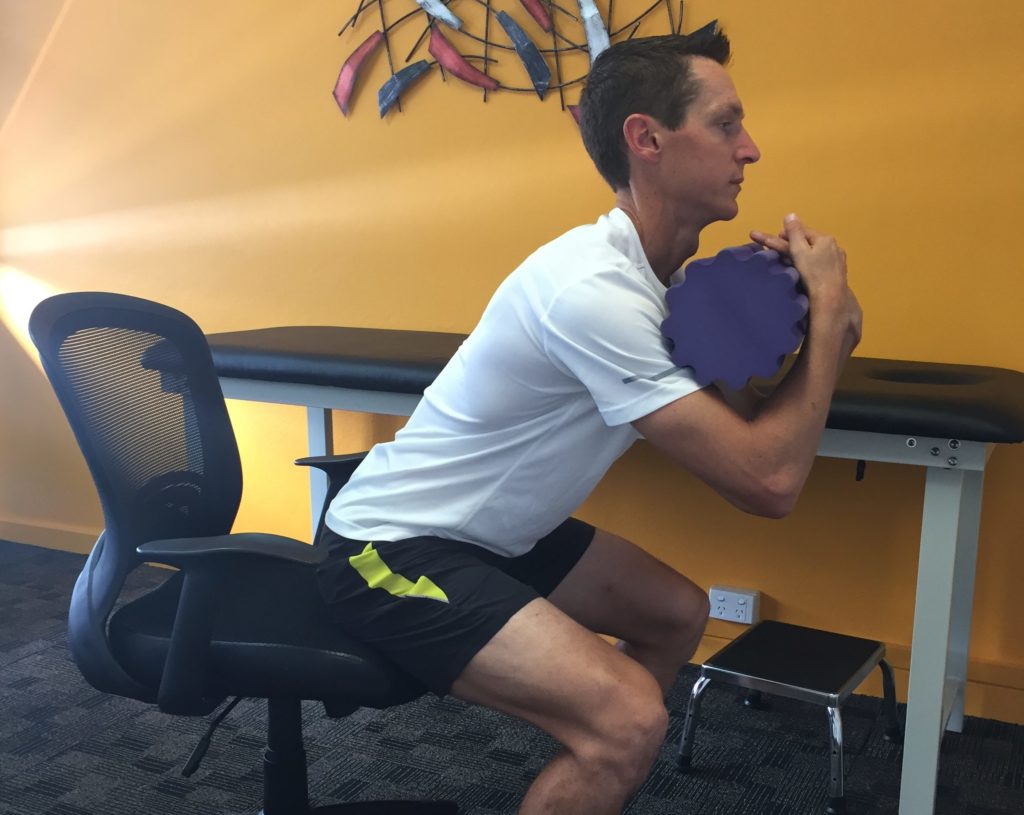Strengthen optimising to correct a posterior pelvic tilt
Optimal human functioning and performance is often finding the right combination between length and strength of various parts of the body. When it comes to strengthening, it is best when we have already performed the mobility and rolling work. This strengthening work locks the new shift away from the posterior pelvic tilt cementing the new foundation. Ideally, with the right strengthening work this new posture goes from being a conscious very deliberate action to one of unconscious competence
3.1 Standing on one leg (0:24)
This fantastic strength exercise works the entire body, forces us to be upright, enhances coordination and improves balance. It is beautifully simple. The first version involves keeping a flat foot on the ground while lifting the opposite leg. The challenge here is to hold the postion.
If this is easy for you great! Try the exact same thing on tip toes. Raise up as high as possible, keeping your balance and keeping your core switched on. You’ll notice in either of these positions, they are impossible to do if your hips and lower back are rotated in a posterior pelvic tilt.
3.2 Bench or chair assisted squats with dowel (1:28)
If there is one exercise I believe that virtually the entire population needs to do it is the humble squat. For a posterior pelvic tilt, the is a must. The focus here though is the “up” part of the squat. The emphasis is placed as we go from the lowered, crouched position to one of full standing.
Using a chair behind is a great little reminder of how far to go down, likewise depending on your level of mobility and skill you can completely break down the squat into one of its principle components. Focusing on the “up” part of the squat after starting from a seated position is a very useful way to help correct a posterior pelvic tilt.
Using the dowel across the chest is a very good postural cue. The more upright you are the more you’ll involve your entire spine further cementing the stability and total body together.
3.3 Single leg sit to stand exercises (2:59)
This is a great combination of the single leg standing and the squats above. It is best performed with the chair as well and similar to the squat, just focus on one of the component moves- ie lowering slowing into the chair while maintaining balance on one leg or going from a seated to standing position while on one leg. The second is by far the harder however, if you can manage this you are truly shifting away from a posterior tilt and have really created a solid platform of stability.
3.4 Planks (3:41)
An all time favourite when it comes to core strength. Yes, to shift away from a posterior pelvic tilt we need to engage our core. Not necessarily the little “6 pack muscles” but our entire core. Having a strong “barrel like” core is a great sign of spinal support and stability in multiple directions.
The focus here, for a posterior pelvic tilt is to squeeze the abs or belly button towards your spine while maintaining your breathing. Try not to arch or flatten the lower spine too much and remember to stay as long as possible.
Looking to mobilise or stretch for a posterior pelvic tilt?
4 mobilising drills (Part 1) can be found here.
4 stretches (Part 2) can be found here.

